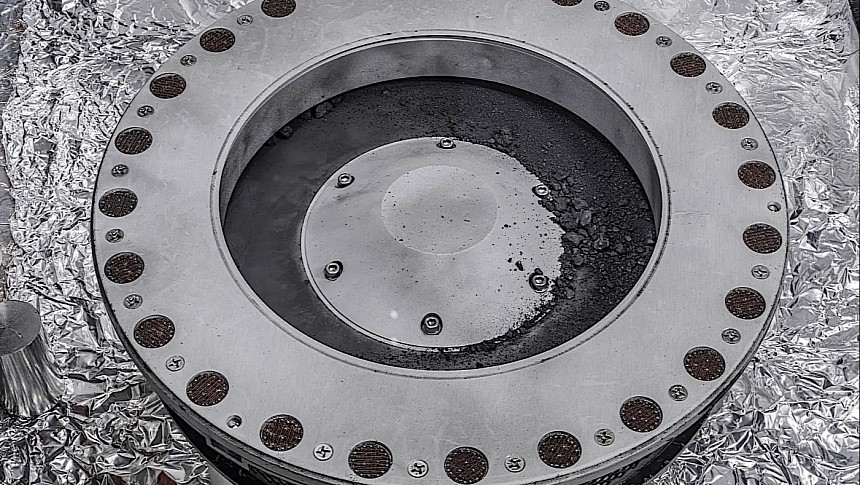On September 24, 2023, America received its first-ever long-distance delivery from space. A piece of asteroid, instead of falling to the ground and doing all sorts of damage, landed softly in the middle of the Utah desert onboard a capsule coming down from a spacecraft.
The moment was the coronation of a seven-year-long trip to a faraway space boulder called Bennu. Performed with a tool called Origins, Spectral Interpretation, Resource Identification, and Security–Regolith Explorer (OSIRIS-REx) the mission's goal was as simple as the mission itself was complex: gather a sample from the asteroid and bring it back home.
It was America's first daring such attempt (Japan is way ahead of the U.S. in this respect), and by the looks of it all the effort, money, and waiting that went into it has been worth it.
In the two weeks or so that passed since the sample landed NASA scientists from the Johnson Space Center were able to conduct their first initial studies of the fragments. They seem to have thrown everything they had at the thing, including electron microscopes, infrared devices, X-rays, and chemical detectors.
Through something called X-ray computed tomography of one of the asteroid particles, these people were able to determine Bennu has plenty of abundant "carbon-rich material and water-bearing clay minerals." In fact, we're talking about the "biggest carbon-rich asteroid sample ever delivered to Earth," 60+ grams of the stuff.
These two elements are high on the list of things considered the building blocks required for life as we know it to occur, and although they don't mean the asteroid itself is a hotbed for life, their presence there does prove a point: life here could have just as well begun out there, brought to the surface of our planet by one or several of the many asteroids that have impacted Earth in its beginnings.
NASA warns these are just preliminary assessments, and that a lot more studies will be needed for confirmation of the nature of these elements. The general feeling however seems to be that Bennu will surely give us an entirely new perspective on things. Not only when it comes to the origins of life, but also on how the solar system formed, and how asteroids now threaten the life they themselves might have seeded here.
The next two years of study will be dedicated to characterizing and analyzing the samples. Then, the piece of asteroid will be divided between NASA, which will keep 70 percent of the quantity, and some 200 scientists from all over the world. The Smithsonian, Space Center Houston, and the University of Arizona will get their own pieces for display.
We will keep an eye on these efforts for as long as it takes, as they may very well change the way we see ourselves in our little corner of the Universe.
It was America's first daring such attempt (Japan is way ahead of the U.S. in this respect), and by the looks of it all the effort, money, and waiting that went into it has been worth it.
In the two weeks or so that passed since the sample landed NASA scientists from the Johnson Space Center were able to conduct their first initial studies of the fragments. They seem to have thrown everything they had at the thing, including electron microscopes, infrared devices, X-rays, and chemical detectors.
Through something called X-ray computed tomography of one of the asteroid particles, these people were able to determine Bennu has plenty of abundant "carbon-rich material and water-bearing clay minerals." In fact, we're talking about the "biggest carbon-rich asteroid sample ever delivered to Earth," 60+ grams of the stuff.
These two elements are high on the list of things considered the building blocks required for life as we know it to occur, and although they don't mean the asteroid itself is a hotbed for life, their presence there does prove a point: life here could have just as well begun out there, brought to the surface of our planet by one or several of the many asteroids that have impacted Earth in its beginnings.
NASA warns these are just preliminary assessments, and that a lot more studies will be needed for confirmation of the nature of these elements. The general feeling however seems to be that Bennu will surely give us an entirely new perspective on things. Not only when it comes to the origins of life, but also on how the solar system formed, and how asteroids now threaten the life they themselves might have seeded here.
The next two years of study will be dedicated to characterizing and analyzing the samples. Then, the piece of asteroid will be divided between NASA, which will keep 70 percent of the quantity, and some 200 scientists from all over the world. The Smithsonian, Space Center Houston, and the University of Arizona will get their own pieces for display.
We will keep an eye on these efforts for as long as it takes, as they may very well change the way we see ourselves in our little corner of the Universe.







